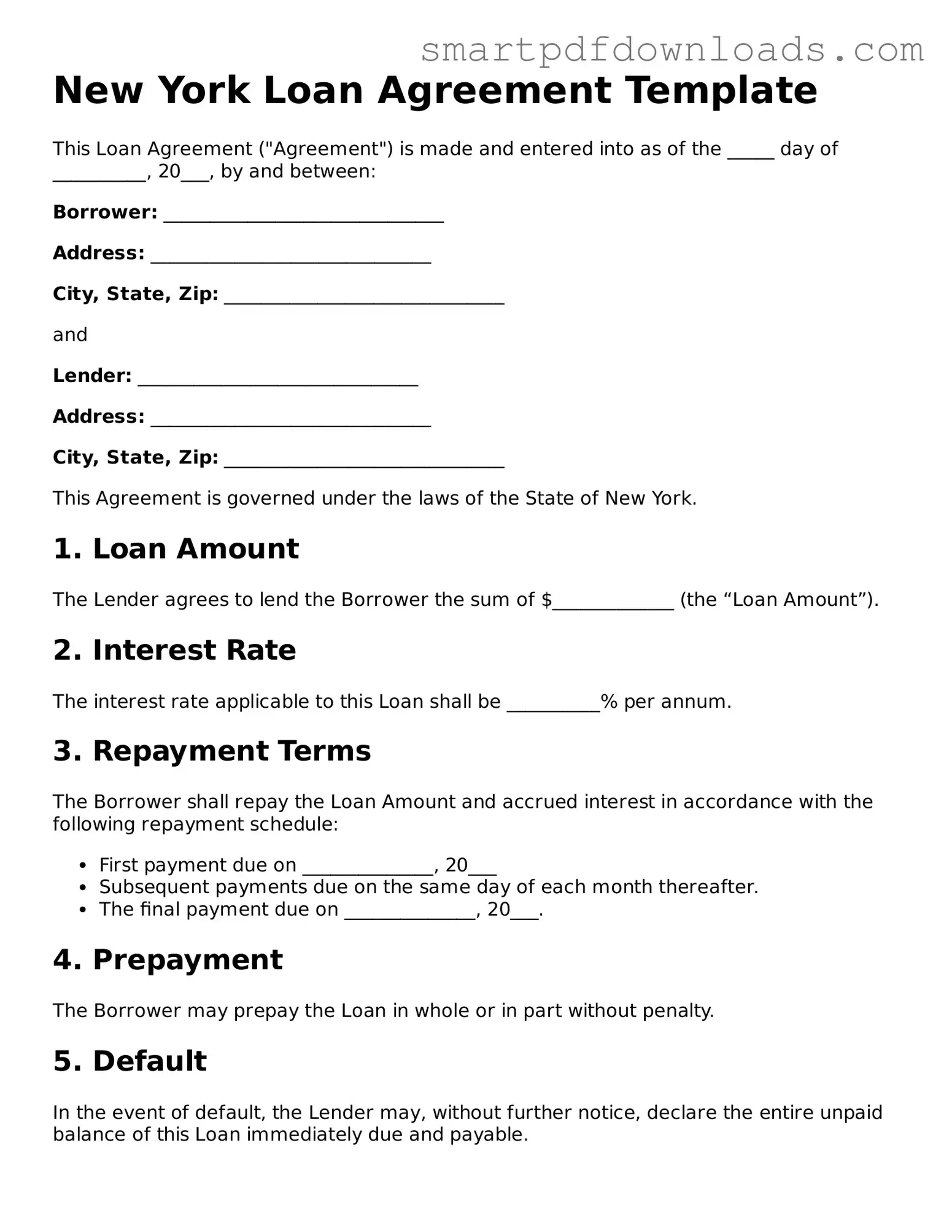New York Loan Agreement Template
This Loan Agreement ("Agreement") is made and entered into as of the _____ day of __________, 20___, by and between:
Borrower: ______________________________
Address: ______________________________
City, State, Zip: ______________________________
and
Lender: ______________________________
Address: ______________________________
City, State, Zip: ______________________________
This Agreement is governed under the laws of the State of New York.
1. Loan Amount
The Lender agrees to lend the Borrower the sum of $_____________ (the “Loan Amount”).
2. Interest Rate
The interest rate applicable to this Loan shall be __________% per annum.
3. Repayment Terms
The Borrower shall repay the Loan Amount and accrued interest in accordance with the following repayment schedule:
- First payment due on ______________, 20___
- Subsequent payments due on the same day of each month thereafter.
- The final payment due on ______________, 20___.
4. Prepayment
The Borrower may prepay the Loan in whole or in part without penalty.
5. Default
In the event of default, the Lender may, without further notice, declare the entire unpaid balance of this Loan immediately due and payable.
6. Governing Law
This Agreement shall be interpreted in accordance with the laws of the State of New York.
7. Amendments
This Agreement may not be modified or amended except by a written agreement signed by both parties.
8. Signatures
The parties hereto have executed this Loan Agreement as of the date first above written.
Borrower's Signature: ______________________________
Date: ______________________________
Lender's Signature: ______________________________
Date: ______________________________
